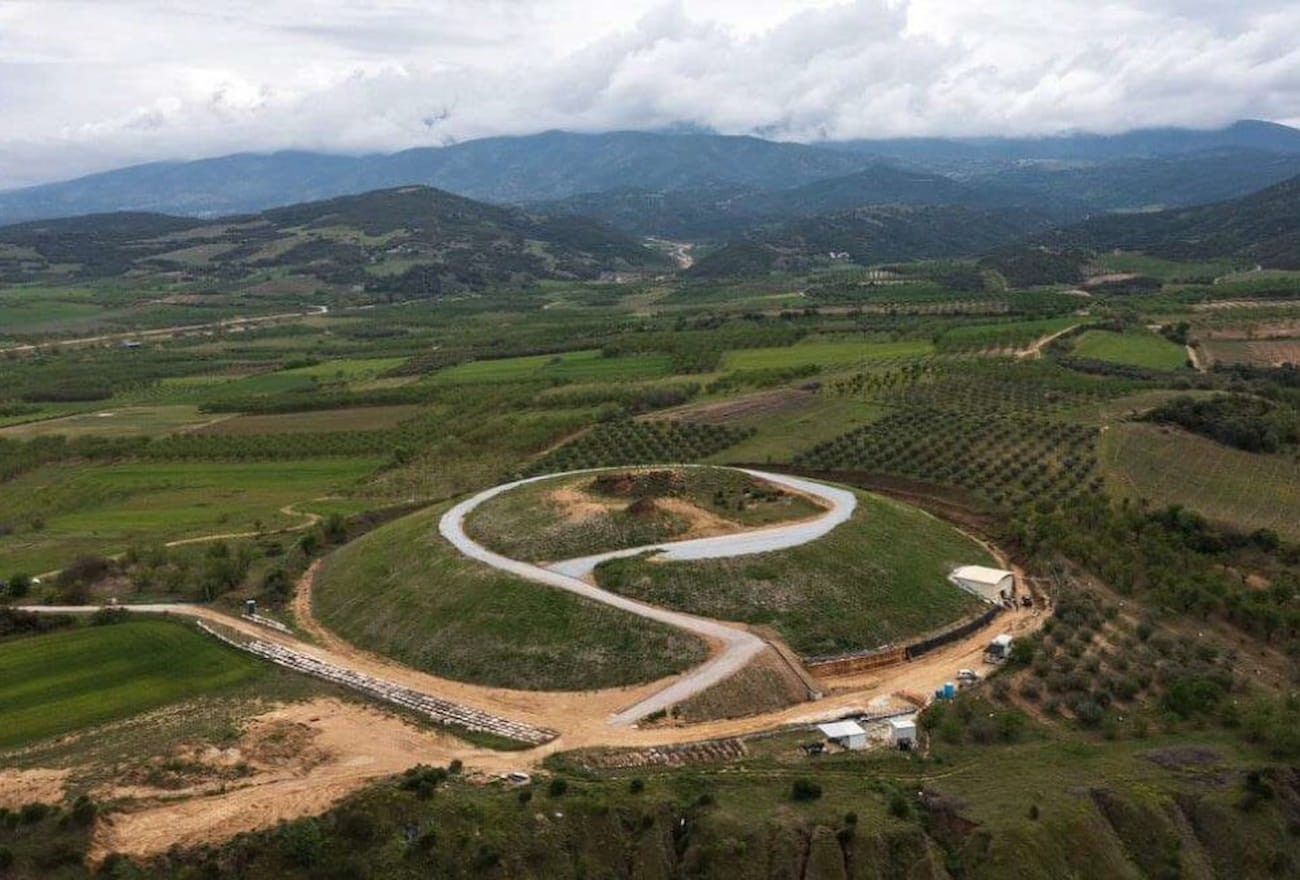In 2012, one of the most significant archaeological discoveries in modern Greek history emerged from the hills of Central Macedonia: the grand tomb at Amphipolis. Later confirmed in 2015 to have been commissioned by Alexander the Great in honor of his closest companion, Hephaestion, the tomb revealed an exquisite mosaic depicting the abduction of Persephone. Once, the renowned Lion of Amphipolis stood atop the structure, guarding its secrets.
Now, a fascinating new study published in the Nexus Network Journal by researcher Dimitris Savvidis offers groundbreaking insight into the monument’s design — revealing that it was deliberately built to interact with sunlight at specific, symbolically charged moments of the year, particularly during the winter solstice.
A Longstanding Theory Confirmed
Since its discovery, scholars speculated that the Amphipolis tomb may have had astronomical alignments. However, until now, no research had definitively proven that theory. Using 3D digital models and computational analysis, Savvidis meticulously examined how sunlight interacted with the monument throughout the year.
His findings were remarkable: during the winter solstice, around December 21st, sunlight would penetrate deep into the burial chamber and directly illuminate the very spot where the sarcophagus once lay. This was no coincidence — according to Savvidis, the tomb’s orientation and construction were intentionally designed to produce this effect.
Hypothetical reconstruction of a missing element from Chamber 3:
a) possible depiction of the presumed reconstruction,
b) view during the summer solstice.
Photo: D. Savvidis
Light, Shadow, and Sacred Symbolism
The interaction wasn’t limited to the inner chamber. Savvidis discovered that sunlight also cast carefully choreographed shadows across architectural features — particularly the outstretched arms of the Caryatids, which may have symbolized a sacred coronation of the deceased.
The monument, it appears, was designed not only to honor the dead but to align with solar events year-round. During the summer and autumn months, sunlight illuminated the outer chambers, highlighting the grand mosaics and stairways. In winter, it reached the deepest recesses of the tomb, and with the arrival of spring, the process began anew — possibly symbolizing rebirth or renewal, themes deeply embedded in ancient Greek cosmology.
A Lost Statue?
The study also raises a tantalizing mystery: Was there once a statue inside the tomb, designed to interact with the light?
Savvidis bases this hypothesis on several clues, including an empty space in the Persephone mosaic that may have held the statue’s base. He also notes the positioning of the Caryatids’ hands, which appear to be holding something — possibly a crown — that could have interacted dramatically with sunlight during certain times of year.
This theory draws parallels with other ancient Greek structures, such as the Temple of Apollo at Bassae, where statues were aligned with significant solar phenomena.
Connections to Cybele, Persephone, and Ancient Rituals
The study also explores a possible connection between the tomb and the worship of Cybele (the Great Mother) and Persephone, both goddesses linked to fertility, death, and rebirth. Decorative motifs within the tomb, including rosettes and the depiction of a ritual bull, support this association.
Of particular interest is the winter solstice’s alignment with ancient Greek festivals such as the Haloa and Poseideia, which celebrated agricultural cycles and the return of light — further underscoring the tomb’s spiritual and symbolic significance.
A Masterpiece of Cosmic Architecture
Savvidis concludes that the Kasta Tomb at Amphipolis is a masterclass in ancient Greek design — a seamless fusion of astronomy, religion, and political symbolism. Its architecture was carefully crafted to connect the memory of the dead with the rhythms of nature, using light not only as an architectural element but as a powerful metaphor for eternity and renewal.
In doing so, the tomb of Amphipolis reminds us that for the ancients, monuments weren’t just stone and marble — they were living testaments to cosmic order, divine presence, and the eternal cycle of life and death.








